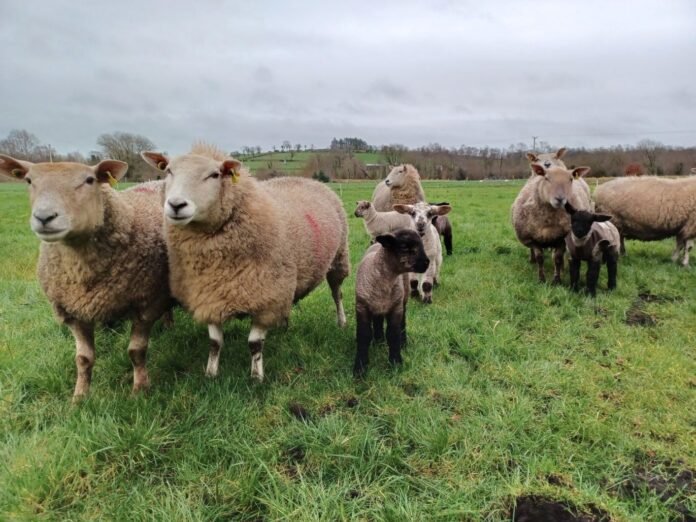In this article, Nigel Gould, CAFRE beef and sheep adviser, Enniskillen, outlines how farmers can record and plan their way towards increased flock efficiency.
As preparation gets underway for lambing in mid-season flocks, consider the benefits of recording important information which farmers can use to guide decisions around flock management, including culling and selecting replacements.
There are a number of high-tech options available incorporating electronic identification (EID) in addition to the more traditional handwritten records, which are also beneficial, albeit more labour intensive.
Flock efficiency
In order to drive increases in productivity on-farm, you need to know your current level of performance and decide on achievable targets.
Targets for lowland flocks of greater than 1.7 lambs weaned per ewe joined and less than 12% lamb mortality from scanning to lambing mean that the target scanning rate needs to be close to 2.0 lambs per ewe.
These targets will be difficult to achieve without a clear plan in place involving:
- Good record keeping;
- Informed decision making.
If replacements are being bred from within the flock, identify at birth and breed from good maternal lines.
In addition to selecting from the most efficient ewes in your flock, selecting a sire for maternal traits is also important.
Important information to record at lambing time includes:
- Birth type (e.g. single or twin birth);
- Lambing ease;
- Lamb vigour;
- Mis-mothering;
- Incidence of abortion, prolapse;
- Twin lamb disease (hypoglycaemia);
- Mastitis;
- Lameness;
- Other health issues.
Similarly, record lamb health issues, such as joint ill or watery mouth.
Where lamb health issues occur, these may be due to poor colostrum quality and/or quantity.
However, they may also indicate a hygiene issue in the lambing sheds or inadequate disinfection of lamb navels and may warrant a change in management practices.
Mark any problem ewes for culling and avoid selecting their progeny as replacements.
Recording growth rates
Lamb performance recording after they leave the lambing shed is also important.
However, it may require some level of EID recording system to be a viable option for larger flocks in particular.
Knowing which ewes and rams produce the fastest growing lambs is useful information.
Selecting ewe lamb replacements with higher growth rates up to eight weeks of age will generally select higher milk yield.
Target a daily live weight gain to eight weeks of at least 280-300 g/day where no supplementation is offered.
Having lambs identified as singles at birth will avoid these lambs being selected, thus selecting for increased prolificacy.
A low growth rate may also help indicate possible lamb health issues such as worm burdens.
Regular monitoring of body condition score (BCS) of ewes at key times during the year will also help guide ewe management.
Although breeding efficiency into a ewe flock can be slow, the benefits are cumulative and will result in a more productive flock in the long term.
Levels and recording methods will vary from farm to farm and range from notebooks or mobile phone apps to the more comprehensive EID systems with tag readers.
The important thing is to start somewhere, and this can be built upon.
Knowing your current level of flock performance, both physical and financial, is important.





